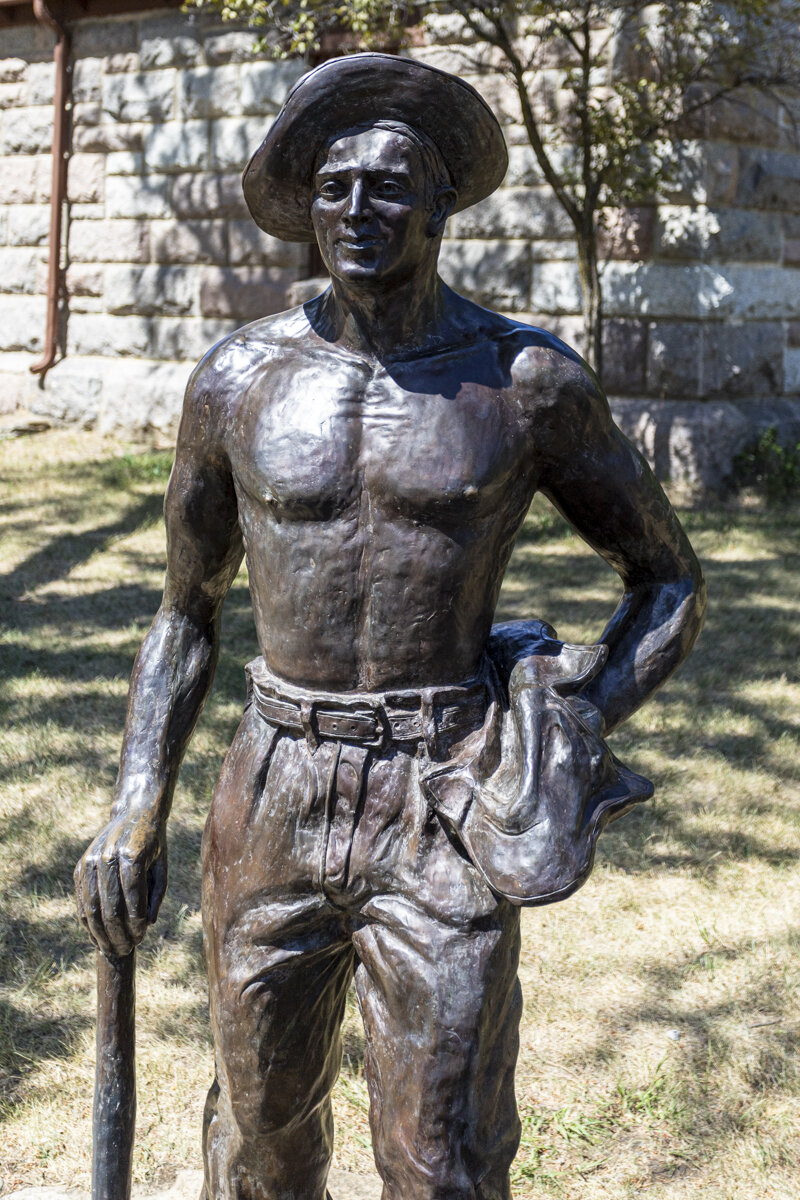
August 12, 2021
FORT ABRAHAM LINCOLN STATE PARK
4480 Fort Lincoln Rd, Mandan, ND 58554
“Fort Abraham Lincoln State Park is a North Dakota state park located 7 miles south of Mandan, North Dakota, United States. The park is home to the replica Mandan On-A-Slant Indian Village and reconstructed military buildings including the Custer House.” Wikipedia
This state park consists of three, kind of distinct, areas. The first is a Mandan Indian village named On-A-Slant. The village thrived for almost two centuries until small pox practically wiped out the Mandan people in 1781. The survivors moved north and joined the Hidatsa tribe near the Knife River. Lewis & Clark discovered the abandoned village reported about the remains of what they found.
Nearly a century after the Mandan people occupied the area, the U.S. dispatched companies of infantry to the area. In 1872, an infantry post was established. The main purpose of the having soldiers in the area was to protect the workers building the railroad in the area. However, foot soldiers were no match for horse mounted natives and so in 1873 Congress commissioned the building of a calvary post. The fort when fully staffed housed three infantry and six calvary companies, for a total of about 650 men. George Armstrong Custer was the first commander of the enlarged fort, serving from 1873 until his death at the battle of Little Big Horn.
The fort was decommissioned in 1891. All of the buildings on the fort were dismantled by area settlers and the material was used to build houses and farms in the area.
In the 1930s, the Civilian Conservation Corps (CCC) established a camp at the park. The CCC built serval buildings including the visitors center, 5 Earthlodges in the On-A-Slant Village, three blockades in the infantry part of the fort, and several buildings in the calvary area. They also used maps and photos to lay cornerstone markers of many of the original buildings of the fort.
One of the reconstructions was of the officer quarters where Custer and his wife lived while on the post. The house has been furnished with period pieces and some items that belonged to the Custers. It cost $8 to get a tour of the house by a docent in period costume. I thought our guide did an excellent job, of course, I found out later his “real” job is a teacher.
The visitors center has a museum with rooms devoted to the Mandan village, the military fort, and to the CCC workers who built the park. Other than the Custer House tour, everything is free, after paying the state park day-user fee, which is $7 per vehicle.
The entrance to Fort Abraham Lincoln State Park
Cornerstones mark the placement of many of the original fort buildings.
General Custer's house
The fireplace and mantle in the parlor with a photograph of the Custer's above.
A hand-cranked sewing machine.
There were several displays of mounted wildlife in the house. Custer would have shot any of the animals on display.
The second floor room served as the officers lounge in the evenings.
This field office is original.
All of the headboards were very tall, this was because people fell asleep sitting up to avoid getting "consumption" or tuberculosis.
The calvary barracks.
Interior view of the barracks
Each center support pole had rifle supports on them.
The dining hall
Inside the stable.
A model of what the Mandan village probably looked like.
A view of the museum room dedicated to the Mandan Indians.
The room in the museum dedicated to the military.
Statue outside the visitors center honoring the men of the CCC.
One of the models of a Mandan Earthlodge.
Inside one of the Earthlodges.
One of the Earthlodges was large enough to be used as a meeting house.
The size of the logs used to build these lodges was impressive.
When leaving the visitors center two wild turkeys ambled across the road.
A view of the reconstructed Earthlodges. Hard to see in the photo, but there are circles in the ground where original lodges were built.
One of the reconstructed blockades in the infantry part of the fort.
A panoramic view of the Missouri River running on the edge of the park.
A view of the calvary section of the fort from the infantry section up on a ridge.
A view of Bismarck from atop the stockade. The tall building near the center is the North Dakota Capitol building.
A view to the northwest from atop the stockade.
A closer view of the stockade.
The fort's cemetery where some of the men who died in the Battle of Little Big Horn were buried along with other soldiers who died while stationed at the fort. When the fort was decommissioned the bodies were reinterred Bismarck or some went to the National Cemetery at the Little Big Horn site. Since then, grave markers show where people were originally buried.





































